User Experience Design Process & Product Development Cycle
We help our B2B and B2C enterprise clients with an iterative user experience design process to improve and polish their digital products.
We are a collaborative team of designers, developers, product owners, strategists, stakeholders, and users (the most important) providing our services to our enterprise clients and well-funded startups.
down arrowUX PROCESS CYCLE
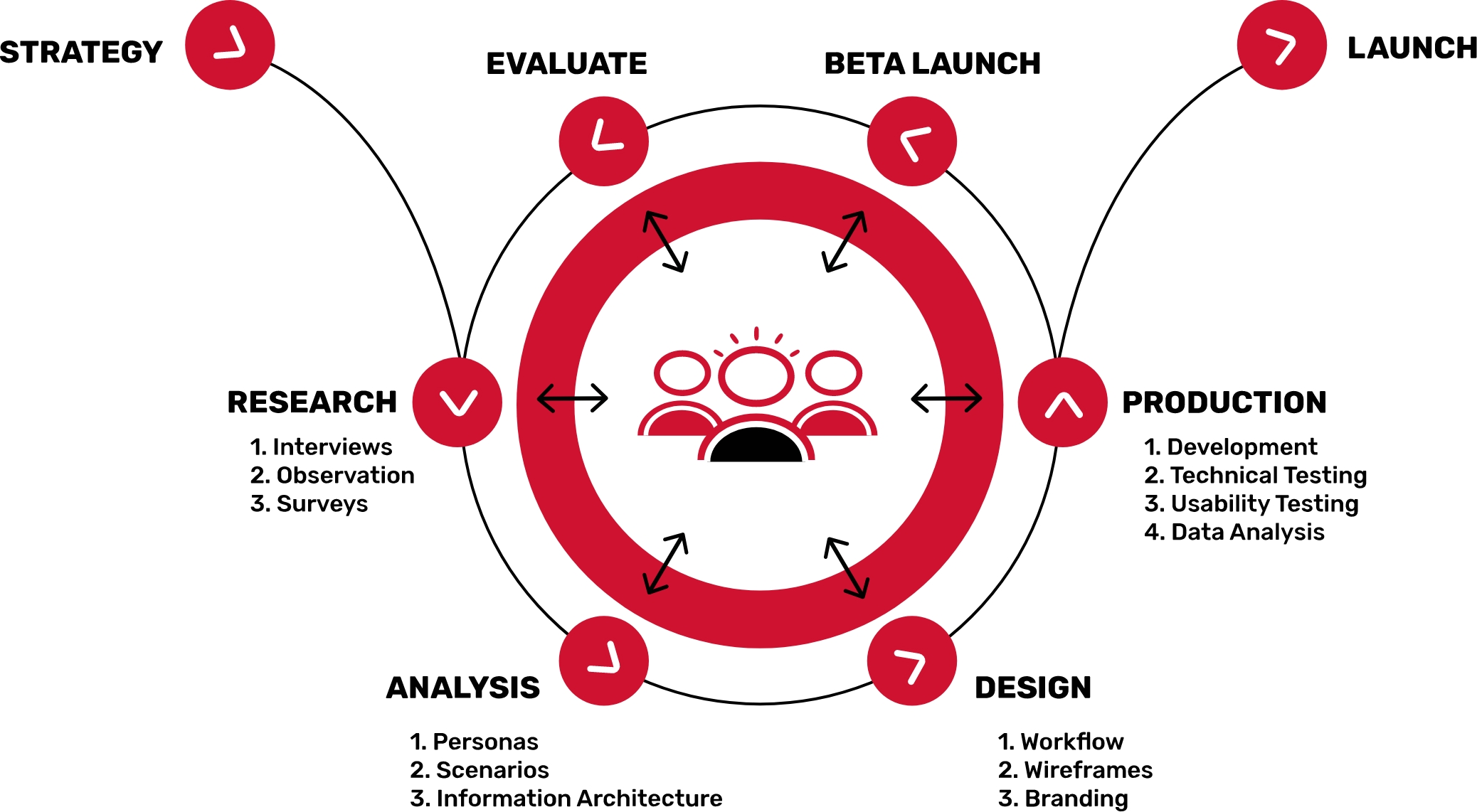
What is User Experience Design (UX)?
“User Experience Design (UXD or UED) is the process of enhancing user satisfaction with a product by improving the usability, accessibility, and pleasure provided in the interaction with the product.” — Wikipedia
Why User Experience Important?
“Design is not just what it looks like and feels like. Design is how it works.” — Steve Jobs.
Our Best Approach to User Experience Design
A well-defined UX process is key to usability. Creating a successful user-centered design encompasses the principles of human-computer interaction (HCI) and goes further to include the following UX steps we cover:
1. Product Management
In this phase, At HealXRlabs we focused on planning and organizing a project and its resources. This includes identifying and managing the lifecycle to be used, applying it to the user-centered design process, formulating the product team, and efficiently guiding the team through all phases until product completion.
Areas of product management –
- Integration management
- Scope management
- Time management
- Cost management
- Quality management
- Human resource management
- Communication management
- Risk management and
- Procurement management
Define Project Plan and Authority Agreement
When defining your project, it is important to come up with a project plan that the team agrees to upfront so that it can serve as a reference point throughout the project. We covered the following project plans outline:
- Objectives
- Scope, which correlates to the requirements
- Resources, including technology, budget, and team roles and responsibilities
- Schedule
- Assumptions
- Dependencies
- Risk assessment and management plan
- Change control plan
2. User Research
At HealXRlabs User research focuses on understanding user behaviors, needs, and motivations through observation techniques, task analysis, and other feedback methodologies.
For user research we do –
- Card Sorting: Allows users to group your site’s information. This helps us to ensure that the site structure matches the way users think.
- Contextual Interviews: We interview real users to observe their natural behavior, which gives us a better understanding of the way users work.
- Focus Groups: Moderated discussion with a group of users, allow us to learn about user attitudes, ideas, and desires.
- Heuristic Evaluation/Expert Review: Our group of usability experts evaluating your website against a list of established guidelines.
- Personas: The creation of a representative user based on available data and user interviews. Though the personal details of the persona may be fiction, the information used to create the user type is not.
- User flows: We create your user’s flow based on the scenarios, we can use it later to review the journey and create wireframes on top of each step.
- Red routes: We find and fix red routes for your product and you’ll be able to identify, prioritize and eliminate any usability obstacles on key user journeys.
3. Usability Evaluation
We define Usability Evaluation which focuses on how well users can learn and use a product to achieve their goals. To gather this information, our research team uses a variety of methods that gather feedback from users about an existing site or plans related to a new site. ‘Usability’ is a combination of factors including:
- Intuitive design
- Ease of learning
- Efficiency of use
- Memorability
- Error frequency and severity
- Subjective satisfaction
4. Information Architecture (IA)
Information architecture (IA) focuses on organizing, structuring, and labeling content in an effective and sustainable way. Followings are the main components of IA –
- Ecosystem Mapping: We create an ecosystem map to find the connections between users and platforms.
- Labeling Systems: We find the best way to represent information
- Navigation Systems: With minimal information, approach users browse or move through information
- Search Systems: Give the required information as per the user’s search inputs
5. Wireframing & Prototyping
At HealXRlabs we design a two-dimensional illustration of a page’s interface that specifically focuses on space allocation and prioritization of content, functionalities available, and intended behaviors – called Wireframe.
Our created Wireframes can vary both in their production, from paper sketches to computer-drawn images, and in the amount of detail that they convey. We use Axure Tool to create Low and high-fidelity which are terms used to identify the level of wireframe production or functionality.
- Low-fidelity wireframes – help facilitate collaborative product design team communication with clients or stakeholders and are relatively quick to make decisions. They tend to be more abstract because they often use simple images to block off space and implement mock content or Latin (lorem ipsum) text as filler for content and labels.
- High-fidelity wireframes – are more work as interactive product documentation. These wireframes often include information about each particular item on the page, including dimensions, behavior, and or actions related to an interactive element.
6. Brand Guideline (Visual) Design
What is a Brand Guideline?
Brand guidelines are a set of tools and rules on how to use your branding elements. The guidelines are used by designers, writers, and anyone else using your brand’s elements like your logo to create marketing materials.
The guidelines are usually presented in a book format that covers how your brand works and how the different elements of your brand work together to form your brand identity.
Why do you need a Brand Guideline?
Now that you know what’s included in brand identity guidelines, you might be wondering why you need them.
Brand guidelines should really be used as a tool to keep your brand consistent. Whether your business is large or small, brand guidelines are critical to helping your brand to work effectively. Without these guidelines, your brand’s message can change at any point just because a logo was used improperly or because someone didn’t know to use the wordmark instead of a graphic element.
The key components of brand guideline we measure –
At HealXRlabs our branding designers measures these are the most important things needed to establish product brand identity because that’s the way to communicate with the whole world. All the other parts of your brand style guide are tangible elements that communicate those key components to the world through design.
- Mission and vision
- Target audience
- Personality
- Core Values
Define the following 7 elements into your brand style guideline –
Brand story
- Hello, this is BRAND. Here’s what we make and do
- These are our Mission, Vision, and Values
Logo
- Here’s our logo and what it means to us
- How to use our logo
- How not to use our logo
Color palette
- These are our colors
- These are our colors
Typography
- These are the fonts we use and why we chose them./li>
- This is our main typeface.
- This is our secondary typeface. Ooh, how pretty!
Imagery
- These are on-brand images
- How to lay them out
- Custom iconography
Voice
- his is how we speak
- Use these do’s and don’ts
7. User Interface Design
User Interface (UI) Designer focuses on anticipating what users might need to do and ensuring that the interface has elements that are easy to access, understand, and use to facilitate those actions. UI adopts the brand guidelines and brings together concepts from interaction design, and information architecture.
For best UI design practices we take care of –
- Keeping the interface minimal and simple
- Create consistency and use common UI elements
- Adopt branding properly
- Be purposeful in page layout
- Make sure that the system communicates what’s happening
8. Interaction Design (IxD)
At HealXRlabs, the Interaction design team focuses on creating engaging interfaces with well-thought-out behaviors. With defined gestures, a user can interact with the system, fix problems quickly.
We define 5 Dimensions of Interaction design (IxD) –
- Words
- Visual representations
- Physical objects or space
- Time
- Behavior
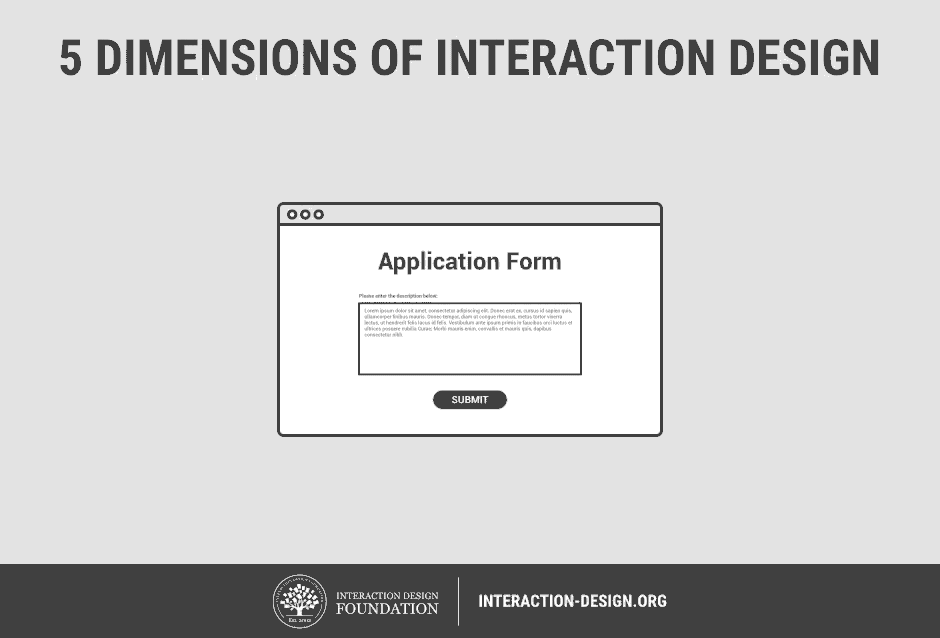
Important questions our interaction designers ask before defining Interaction Design (IxD)
- What can a user do with their mouse, finger, or stylus to directly interact with the interface?
- What about the appearance (color, shape, size, etc.) gives the user a clue about how it may function?
- Do error messages provide a way for the user to correct the problem or explain why the error occurred?
- What feedback does a user get once an action is performed?
- Are the interface elements a reasonable size to interact with?
- Are familiar or standard formats used?
9. Content Strategy
Our Content strategy team focuses on the planning, creation, delivery, and control of the content. We not just write meaningful content but also define the images and multimedia as per user emotions. This useful and usable, we structured content and easily found is vital to improving the user experience of a digital product.
Content Lifecycle
Our team Producing compelling and sustainable content means that your users need to understand and follow the content lifecycle. In general, content lifecycles include the following:
- Audit and Analysis: We do Content stakeholder interviews, competitive analysis, objective analysis, and evaluation of the content environment (site, partner content, sister, parent sites)
- Strategy: We determine topical ownership areas, taxonomy, process/ workflow for content production, sourcing plan, voice, and brand definition
- Plan: We help to staff recommendations, content management system customization, metadata plan, communications plan, migration plan
- Create: We writing content, asset production, control model, search engine optimization, quality assurance
- Maintain: Plan for periodic auditing, advise the client, determine targets for success measures.
10. Product Development
All of our program managers have years of experience using Agile, Scrum methodologies to build and deliver great products.
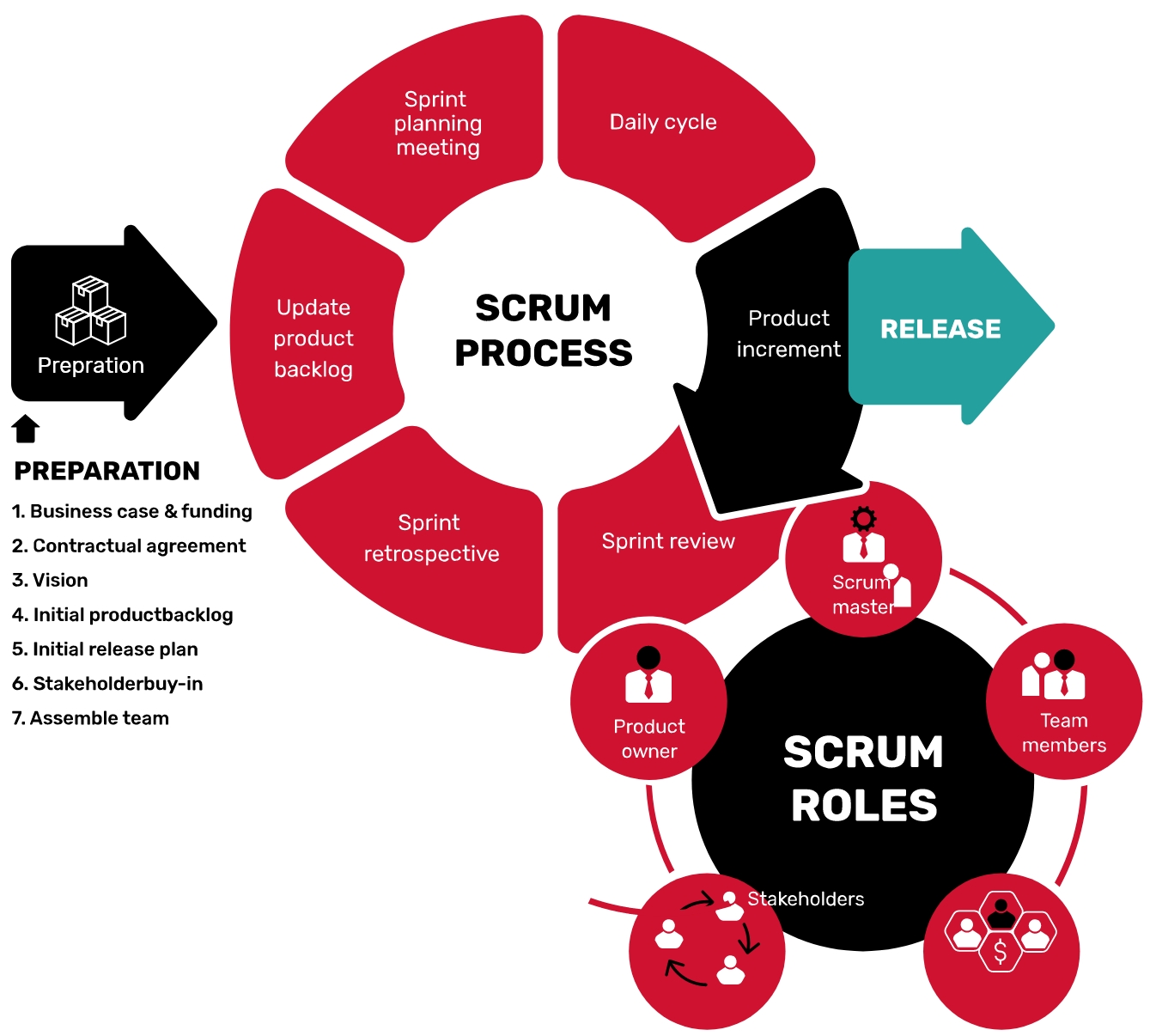
Scrum is a subset of Agile. It is a lightweight process framework for agile development and most of the time used by big enterprise companies.
A “process framework” is a particular set of practices that must be followed in order for a process to be consistent with the framework. The Scrum process framework requires the use of development cycles called Sprints. Scrum is “Lightweight” which means that the overhead of the process is kept as small as possible, to maximize the amount of productive time available for getting useful work done.
With A Scrum process in your digital product is distinguished from other agile processes by specific concepts and practices, divided into the three categories of Roles, Artifacts, and Time Boxes. These and other terms used in Scrum are defined below. We use Scrum most often used to manage complex software and product development, using iterative and incremental practices. This development process significantly increases productivity and reduces time to benefits relative to the classic “waterfall”. An agile Scrum process benefits the organization by helping it to:
- Increase the quality of the deliverables
- Cope better with change (and expect the changes)
- Provide better estimates while spending less time creating them
- Be more in control of the project schedule and state
11. Usability Testing
We help companies eliminate bad user experiences. At HealXRlabs, we make it easy for you to get on-demand feedback from your target market—wherever they are—so you can protect your brand, boost conversions, and provide amazing experiences.
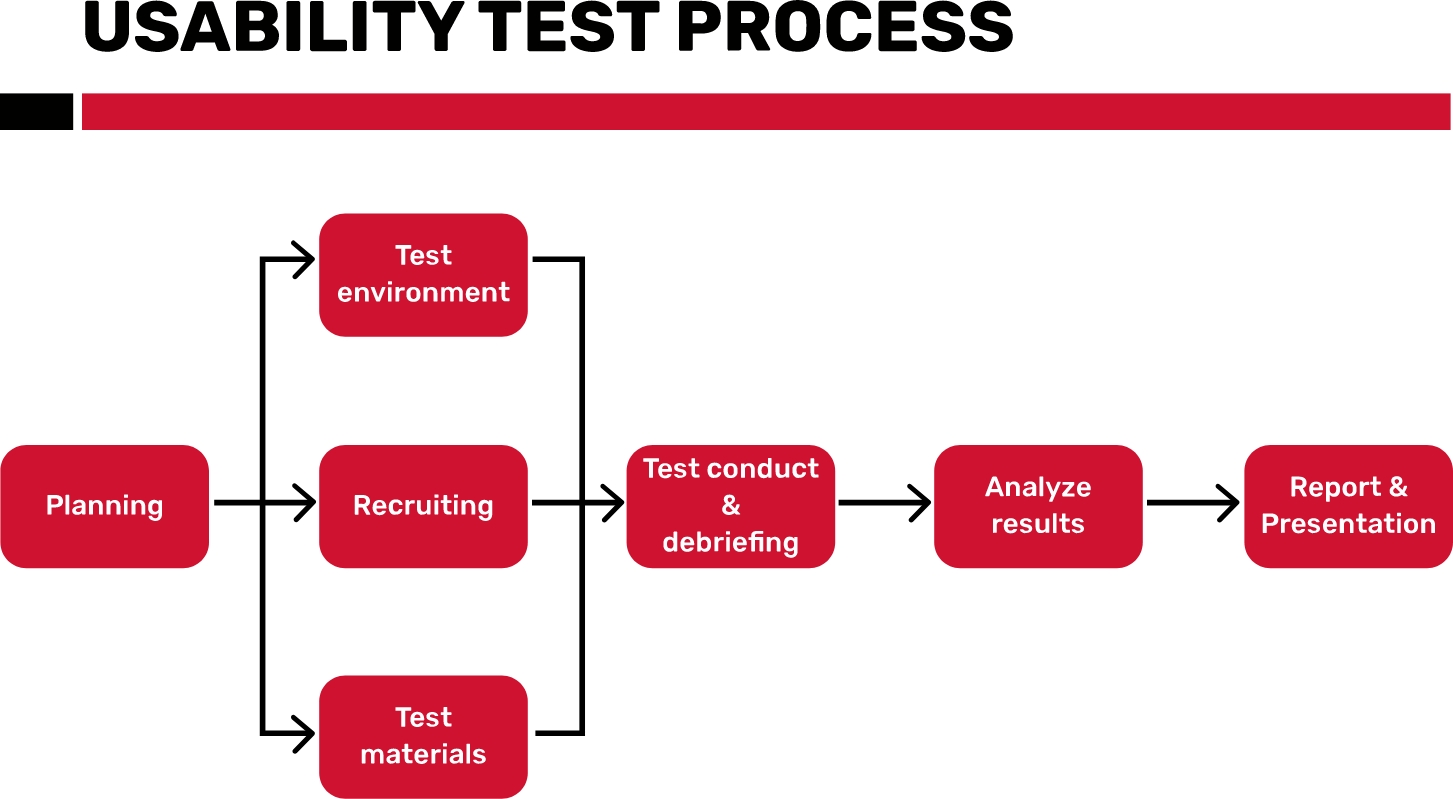
We conduct Usability testing during the product’s beta launch refers to evaluating the product or service by testing it with real users. Our Usability testing team typically, during a test, participants will try to complete typical tasks while observers watch, listen, and takes notes. The goal is to identify any usability problems, collect qualitative and quantitative data and determine the participant’s satisfaction with the product.
To run an effective usability test, our UT (Usability Testing) Team develops a solid test plan, recruit participants, and then analyze and report your findings.
We have a formal usability testing lab in our studio where having two connected rooms outfitted with audio-visual equipment.
12. Data Analysis
Our data analysis team experts in the collection, reporting, and analysis of data. Our main focus is on identifying measures based on your organizational and user goals and using the website/mobile data to determine the success or failure of those goals and to drive strategy and improve the user’s experience.
Basic steps of the web analytics process we follow –
Most web analytics processes come down to four essential steps which are:
- Collection of data: Our team collecting the relevant data to answer whether you have met (or fail to meet) your goals, find out what you can do to improve your KPIs.
- Processing of data into information
- Developing KPI: Key performance indicators are metrics in which we can measure each CTA.
- Formulating online strategy
- A/B testing: As per the data analysis our UX team perform a controlled experiment with two variants, in online settings, such as web development. The goal of A/B testing is to identify changes to web pages that increase or maximize a statistically tested result of interest.
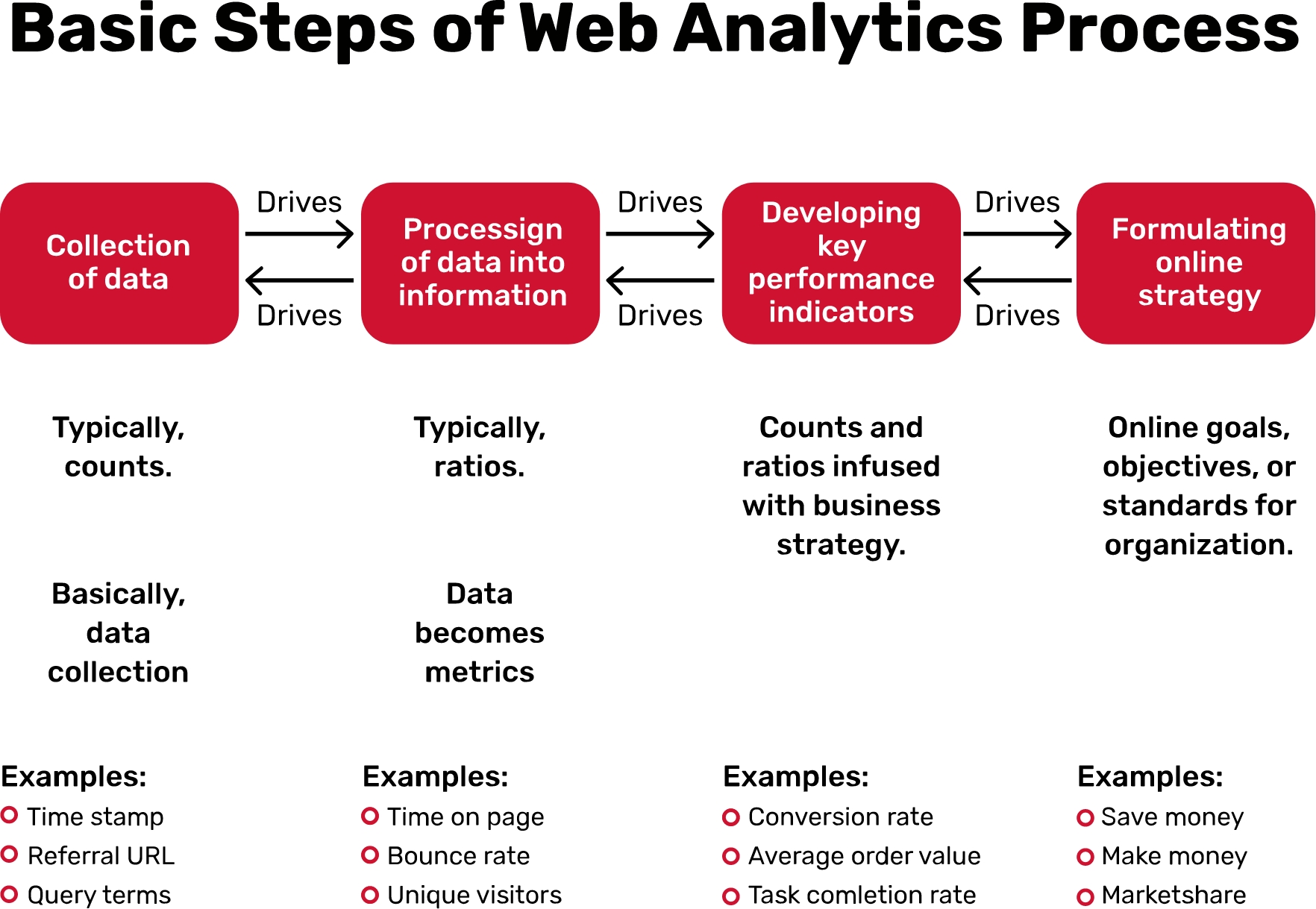
Our Data Analysis and Research team keeps our stakeholders in the loop and makes the data relevant and meaningful by demonstrating how data shows areas of success and of improvement on their product.
Evolutions are the basic nature of a Digital Product
With this cyclical process where evolved data analysis, user feedback, and user testing – you will have a clear picture of the next step. If new problems arrive then new solutions will appear. But above process cycle will help you to face the new challenges with more clarity and wisdom. We hope you may have used many of the above techniques but if you have not tried them all – We highly recommend trying them all at least once. We have used them on many of the previous digital products and we found that the more we use, the better results we deliver. Now, what are you waiting for – Let's make something amazing together!